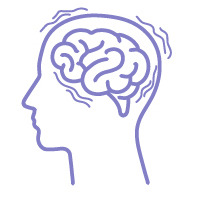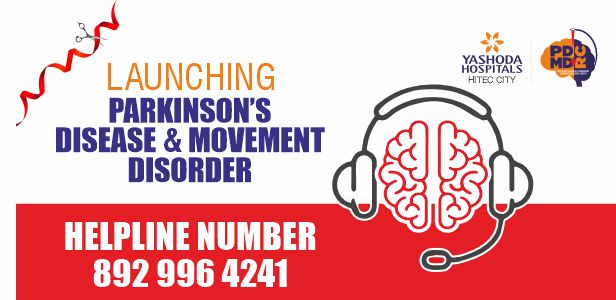Movement Disorders Diseases & Conditions
Depending upon the types of abnormal movements the disease conditions can be classified as below
Hypokinetic movement disorders:
- Parkinson’s disease
- Atypical parkinsonism (PSP, MSA, LBD, CBD, etc..)
Hyperkinetic movement disorders:
- Tremors
- Dystonia
- Myoclonus
- Chorea
- Tics
- Hemifacial spasm
- Tardive dyskinesia
- Restless leg syndrome (RLS)
Parkinson’s disease (PD) is a chronic and progressive neurological condition, characterized predominantly by the gradual degeneration of dopamine-producing neurons in a specific region of the brain called the substantia nigra.
- Dystonia: Dystonia causes involuntary muscle spasms or contractions, resulting in twisting or jerking movements and unusual body positions. It can affect almost any part of the body, with most cases involving only one area. Common types include cervical dystonia (torticollis), which affects the neck muscles, causing abnormal head movements; blepharospasm, characterized by excessive blinking or eye spasms; and oromandibular dystonia, affecting the face muscles and jaw.
- Essential tremor (ET) is the most common movement disorder, also referred to as benign essential tremor, familial tremor, or hereditary tremor. People with ET experience uncontrollable shaking (tremor) in various body parts, such as the hands, head, or voice. This condition typically begins in adulthood and may worsen gradually with age.
- Huntington’s disease (HD) is a familial brain condition where nerve cells break down over time. It usually starts between ages 30 and 50 but can begin earlier. HD affects movement, behavior, thinking, and personality. The main symptom is uncontrolled movements called chorea, but it also causes speech and walking problems.
- Wilson’s disease is a genetic condition where a faulty gene leads to excessive copper buildup in the brain, liver, and other organs. Symptoms typically appear in childhood or early adulthood and include involuntary movements, balance issues, speech difficulties, and liver problems. Early diagnosis and treatment can lead to a normal life.
- Normal Pressure hydrocephalus (NPH) is a neurological condition characterized by an abnormal buildup of cerebrospinal fluid (CSF) in the brain’s ventricles, leading to symptoms such as gait disturbance, urinary incontinence, and cognitive impairment.
- Ataxia: It happens when different parts of the nervous system don’t work together properly, often due to damage in the brain, spinal cord, or nerves. Symptoms of ataxia include trouble standing or walking, shaky movements, slurred speech, and dizziness.
FAQ’s
What are the most common types of movement disorders?
Essential tremors, Parkinson’s disease, Huntington’s disease, dystonia, and tourette syndrome (TICS) are among the most common movement disorders.
What is Parkinson’s disease, and how does it affect movement?
Parkinson’s disease is a neurological condition marked by the death of dopamine-releasing neurons. This disrupts cell-to-cell communication, making it difficult for the cells to control muscle movement, leading to involuntary movements, tremors, and other symptoms.
How is essential tremor different from Parkinson’s?
The common characteristic that distinguishes Parkinson’s disease from essential tremor is a person with essential tremor experiences shaky hands when moving, while a person with Parkinson’s disease experiences tremors while at rest.
Are restless leg syndrome and movement disorders related?
Yes, it is a related neurological movement disorder. An uncontrollable urge to move one’s legs that causes discomfort and disrupts sleep is a common symptom of restless leg syndrome.
Can movement disorders be linked to other neurological diseases?
Multiple sclerosis, Huntington’s disease, stroke, and Alzheimer’s are among the neurological conditions that are believed to be linked to movement disorders. People who have these primary conditions exhibit symptoms associated with movement disorders.
Can muscle stiffness indicate a movement disorder?
Muscle stiffness is a sign of a movement disorder because it can impair balance and coordination and is a symptom of various conditions, such as dystonia, & parkinsonism.
What causes involuntary muscle movements?
Stress, some neurological disorders, and some drugs that interfere with the brain’s signaling pathways.
Are movement disorders degenerative?
Yes, and Parkinson’s disease, which involves the progressive degeneration of neurons, is an example of a degenerative movement disorder.
Can infections trigger movement disorders?
Infections such as encephalitis or certain viral infections can damage neurons and cause movement disorders.
Are balance problems part of movement disorders?
Yes, balance problems are considered to be part of movement disorders especially in conditions with Parkinsonism.







 Appointment
Appointment WhatsApp
WhatsApp Call
Call More
More